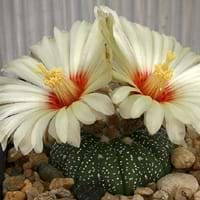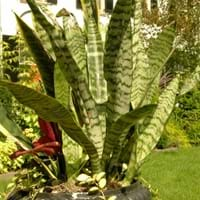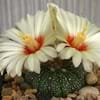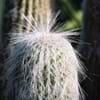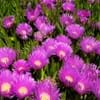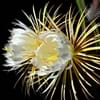Life Span
Perennial
Perennial
Type
Cactus, Flowering Plants
Herbaceous Perennial
Origin
Mexico, Texas
India
Types
Not Available
Sansevieria cylindria, Sansevieria parva
Habitat
Desert, In desert grasslands, Rocky areas
All sorts of environments
USDA Hardiness Zone
13-15
9-15
Sunset Zone
21,22,23,24
H1, H2, 13, 14, 16, 17, 18, 19, 20, 21, 22, 23, 24
Habit
Oval or Rounded
Clump-Forming
Minimum Height
Not Available
Minimum Width
Not Available
Flower Color
Red, Yellow
White
Flower Color Modifier
Not Available
Not Available
Fruit Color
Green, Pale Pink
Red orange
Leaf Color in Spring
Not Available
Dark Green
Leaf Color in Summer
Not Available
Dark Green
Leaf Color in Fall
Not Available
Dark Green
Leaf Color in Winter
Not Available
Dark Green
Leaf Shape
Not Applicable
Sword-like
Plant Season
Not Available
Spring, Summer, Fall, Winter
Sunlight
Not Available
Partial Sun, Partial shade
Growth Rate
Not Available
Medium
Type of Soil
Not Available
Clay, Loam, Sand
The pH of Soil
Not Available
Acidic, Neutral
Soil Drainage
Not Available
Well drained
Bloom Time
Not Available
Spring
Repeat Bloomer
Not Available
No
Tolerances
Not Available
Drought, Soil Compaction
Where to Plant?
Ground
Container, Ground, Pot
How to Plant?
Seedlings, Transplanting
Cuttings, Divison
Plant Maintenance
Medium
Medium
Watering Requirements
Needs very little water
Requires regular watering
In Summer
Lots of watering
Lots of watering
In Spring
Moderate
Moderate
In Winter
Average Water
Average Water
Soil pH
Not Available
Acidic, Neutral
Soil Type
Not Available
Clay, Loam, Sand
Soil Drainage Capacity
Not Available
Well drained
Sun Exposure
Not Available
Partial Sun, Partial shade
Pruning
Remove damaged leaves, Remove dead branches, Remove dead leaves
Remove damaged leaves, Remove dead branches, Remove dead leaves
Fertilizers
All-Purpose Liquid Fertilizer
All-Purpose Liquid Fertilizer
Pests and Diseases
Dry root rot, Root mealy bugs
Larvae of Agave Weevil
Plant Tolerance
Drought
Drought
Flower Petal Number
Not Available
Single
Showy Fruit
Not Available
No
Edible Fruit
Not Available
No
Fragrant Flower
Not Available
No
Fragrant Fruit
Not Available
No
Fragrant Leaf
Not Available
No
Fragrant Bark/Stem
Not Available
No
Showy Foliage
Not Available
Yes
Showy Bark
Not Available
No
Foliage Texture
Bold
Bold
Foliage Sheen
Not Available
Glossy
Invasive
Not Available
No
Self-Sowing
Not Available
No
Attracts
pollinators
Not Available
Allergy
Not Available
Analgesic
Aesthetic Uses
Beautification, Showy Purposes
Showy Purposes
Beauty Benefits
Not Available
Not Available
Environmental Uses
Air purification
Air purification
Medicinal Uses
Not Available
Acne, anti-allergy, Antiasthamatic, Bronchitis
Part of Plant Used
Flowers
Leaves, Rhizomes, Rootstock, Shoots
Other Uses
Used as Ornamental plant
Traditional medicine
Used As Indoor Plant
Yes
Yes
Used As Outdoor Plant
Yes
Yes
Garden Design
Not Available
Container, Tropical
Botanical Name
Astrophytum asterias
Sansevieria trifasciata
Common Name
Star Cactus, Sand Dollar Cactus
Mother-in-law's Tongue, Viper's Bowstring Hemp, Snake plant
In Hindi
रेत डॉलर कैक्टस
नाग संयंत्र
In German
Sand Dollar Cactus
Snake plant
In French
Sand Dollar Cactus
Snake plant
In Spanish
Sand Dollar Cactus
Snake plant
In Greek
Sand Dollar Cactus
φυτό φίδι
In Portuguese
Cacto do dólar de areia
Snake plant
In Polish
Sand Dollar Cactus
wąż roślin
In Latin
Sand Dollar Cactus
Snake plant
Phylum
Magnoliophyta
Tracheophyta
Class
Magnoliopsida
Magnoliopsida
Order
Caryophyllales
Asparagales
Family
Cactaceae
Agavaceae
Genus
Astrophytum
Sansevieria
Clade
Angiosperms, Core eudicots, Eudicots
Angiosperms, Monocots
Tribe
Cacteae
Not Available
Subfamily
Cactoideae
Nolinoideae
Difference Between Sand Dollar Cactus and Snake Plant
If you are confused whether Sand Dollar Cactus or Snake Plant are same, here are some features about those plants to help you choose better. Many people think that these two plants have the same characteristics, but one can see Sand Dollar Cactus and Snake Plant Information and learn more about it. Fertilizers required for proper growth of Sand Dollar Cactus are All-Purpose Liquid Fertilizer, whereas for Snake Plant fertilizers required are All-Purpose Liquid Fertilizer. Hence, one should know the basic difference between Sand Dollar Cactus and Snake Plant if you are planning to have them in your garden to enhance its beauty.
<
Flowering PlantsImportance of Sand Dollar Cactus and Snake Plant
Want to have the most appropriate plant for your garden? You might want to know the importance of Sand Dollar Cactus and Snake Plant. Basically, these two plants vary in many aspects. Compare Sand Dollar Cactus and Snake Plant as they differ in many characteristics such as their life, care, benefits, facts, etc. Every gardener must at least have the slightest clue about the plants he wants to plant in his garden. Compare their benefits, which differ in many ways like facts and uses. The medicinal use of Sand Dollar Cactus is Not Available whereas of Snake Plant is Acne, anti-allergy, Antiasthamatic and Bronchitis. Sand Dollar Cactus has beauty benefits as follows: Not Available while Snake Plant has beauty benefits as follows: Not Available.
Compare Facts of Sand Dollar Cactus vs Snake Plant
How to choose the best garden plant for your garden depending upon its facts? Here garden plant comparison will help you to solve this query. Compare the facts of Sand Dollar Cactus vs Snake Plant and know which one to choose. As garden plants have benefits and other uses, allergy is also a major drawback of plants for some people. Allergic reactions of Sand Dollar Cactus are Not Available whereas of Snake Plant have Analgesic respectively. Having a fruit bearing plant in your garden can be a plus point of your garden. Sand Dollar Cactus has no showy fruits and Snake Plant has no showy fruits. Also Sand Dollar Cactus is flowering and Snake Plant is not flowering . You can compare Sand Dollar Cactus and Snake Plant facts and facts of other plants too.
